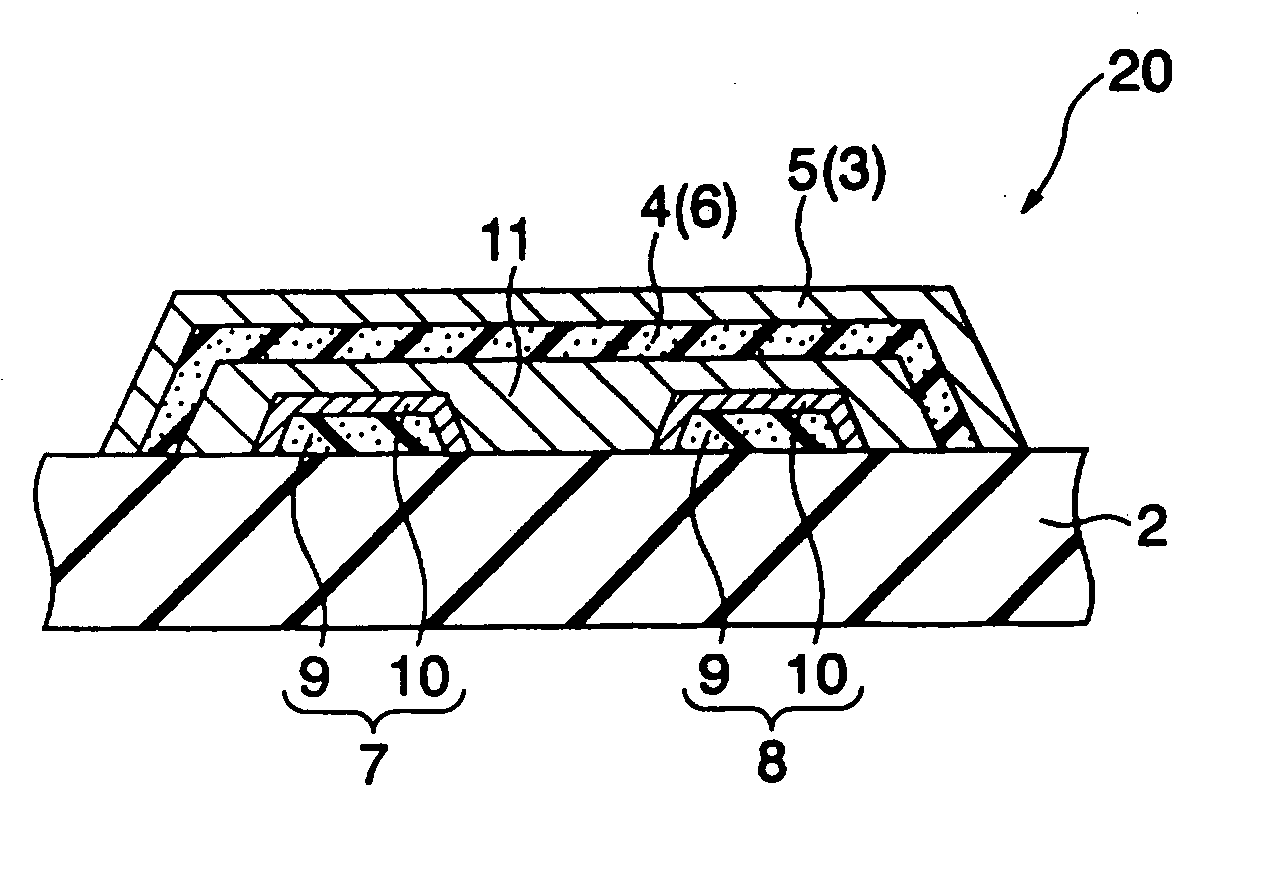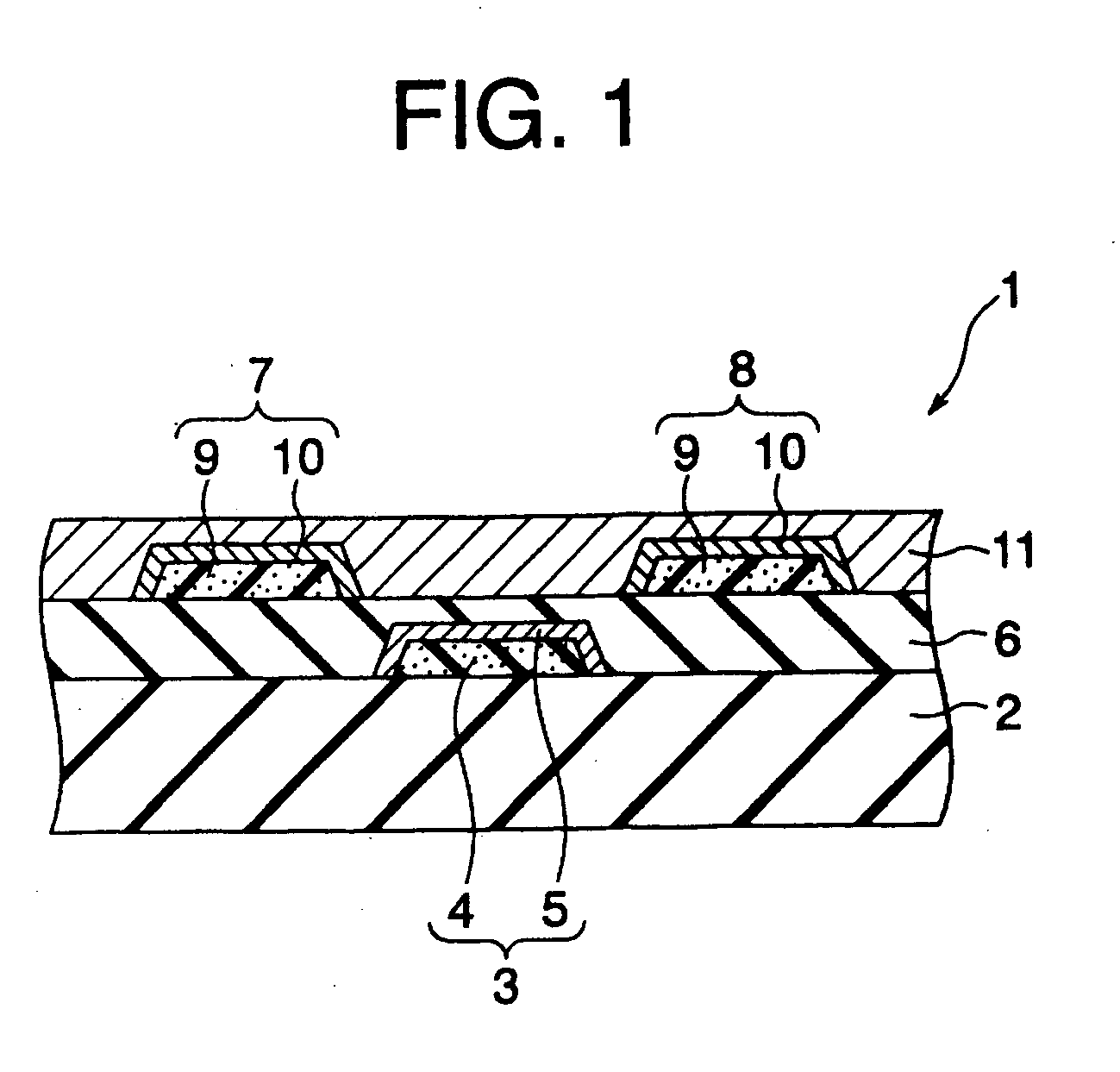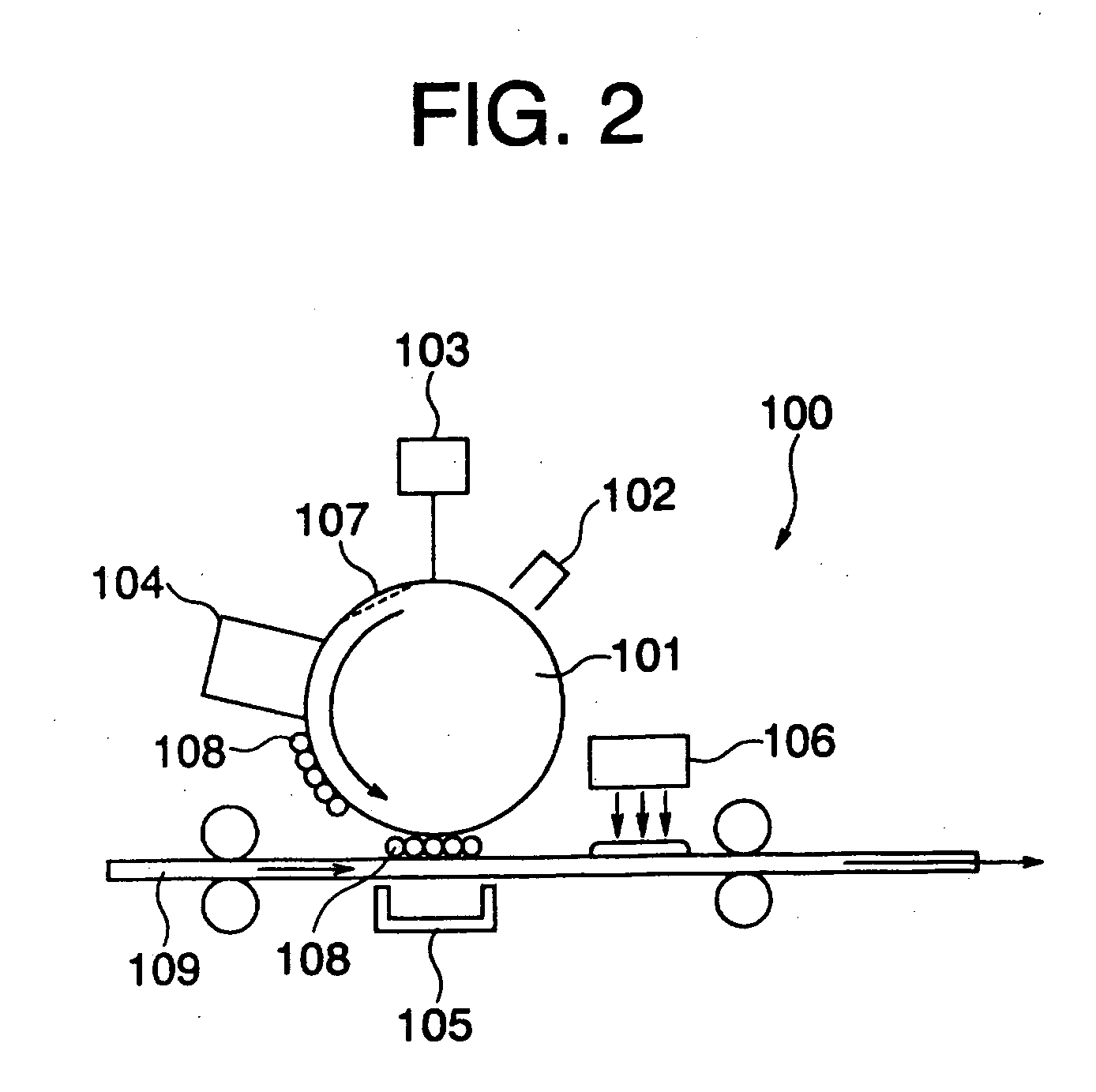Organic semiconductor element and manufacturing method thereof
- Summary
- Abstract
- Description
- Claims
- Application Information
AI Technical Summary
Problems solved by technology
Method used
Image
Examples
Embodiment Construction
[0022] Hereinafter, embodiments of the present invention will be described with reference to the drawings. It should be noted that, though the embodiments of the present invention will be described based on the drawings, these drawings are provided only for an illustrative purpose and in no way are to limit the present invention.
[0023]FIG. 1 is a sectional view showing a rough structure of an organic semiconductor element according to a first embodiment of the present invention. An organic semiconductor element 1 shown in the drawing has a substrate 2 made of, for example, an insulation resin. In particular, a flexible resin substrate such as an insulation resin film is effective for making full use of characteristics of the organic semiconductor element 1 and is preferable also from the viewpoint of reducing manufacturing cost, expanding applicable fields, and so on of the organic semiconductor element 1. However, a constituent material of the substrate 2 is not limited to the ins...
PUM
 Login to View More
Login to View More Abstract
Description
Claims
Application Information
 Login to View More
Login to View More - R&D
- Intellectual Property
- Life Sciences
- Materials
- Tech Scout
- Unparalleled Data Quality
- Higher Quality Content
- 60% Fewer Hallucinations
Browse by: Latest US Patents, China's latest patents, Technical Efficacy Thesaurus, Application Domain, Technology Topic, Popular Technical Reports.
© 2025 PatSnap. All rights reserved.Legal|Privacy policy|Modern Slavery Act Transparency Statement|Sitemap|About US| Contact US: help@patsnap.com



